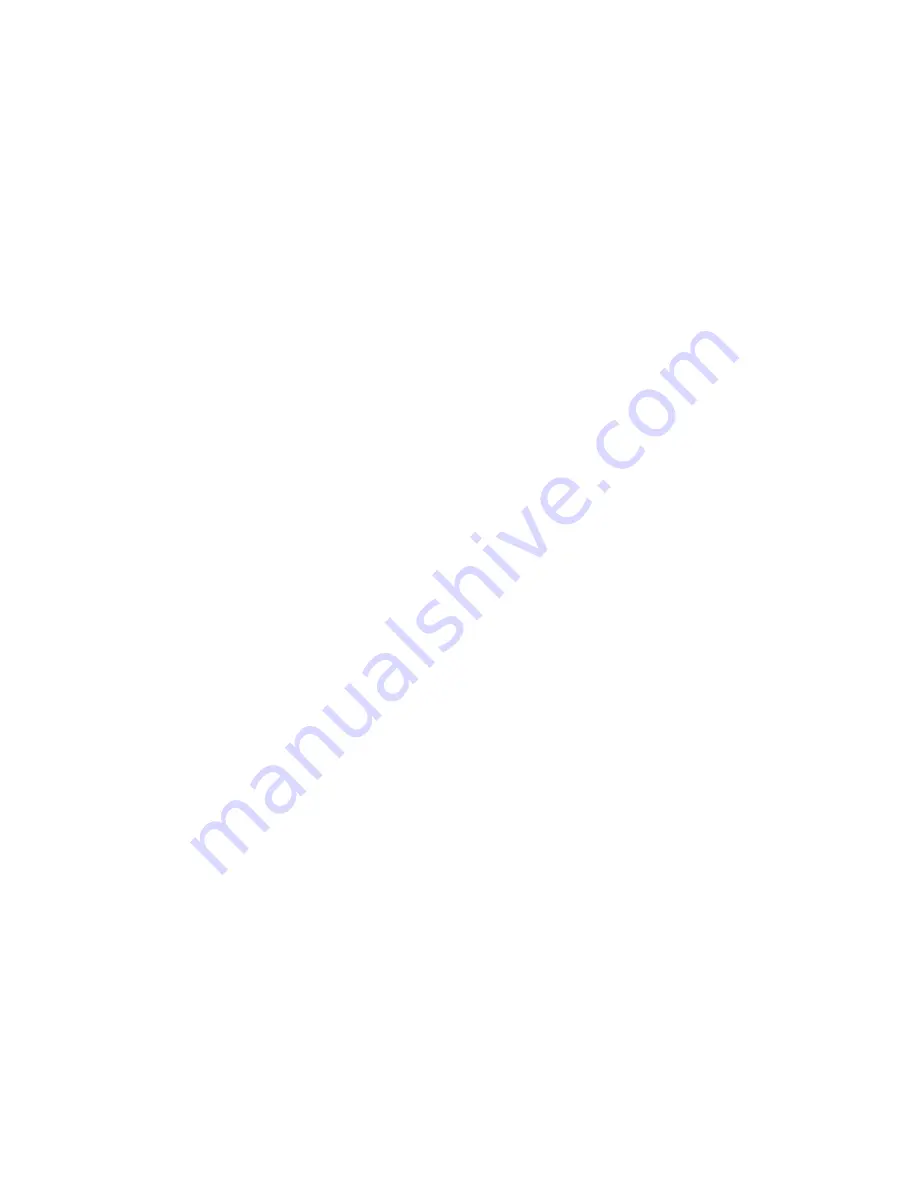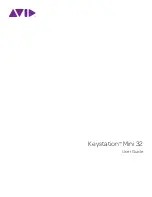
Chapter 3: Getting Started
6
Keystation Mini 32 User Guide
Octave/Data Buttons (Oct/Data)
The assignable Octave buttons are used to shift the keyboard up or down in one octave increments (12 semi-
tones at a time). This extends the range of the keyboard up to 4 Octaves in either direction, which lets you play
notes that lie outside of the 32 keys.
In their default state, such as when you first switch on your Keystation keyboard, the buttons are backlit in
red. However when you press either of them the color of that button turns green indicating that the octave
change is active.
If you press the octave “+” button once, the button will turn green indicating the keyboard’s octave is now
shifted up. If you press the octave “+” key again, you will shift one more octave up, and so on.
To shift the octave down, press the octave “-” button and notice that the button turns green. If only the octave
“-” key is lit in green, the octave is shifted down and, if only the octave “+” key is lit in green, the octave is
shifted up.
To return the octave shift to 0, press both the octave “+” and “-“keys together. Both LEDs will return to their
normal red color at half brightness, indicating that the octave shift has returned to 0.
The Oct/Data buttons will default to Octave shift when the keyboard is powered on. However, if the Octave
buttons have been assigned to a different function as described in “Reassigning the Octave/Data Buttons” on
page 9, the new assignment is retained when the keyboard is switch off. The Octave buttons will only default
to the factory assignment, after a full reset (see “Full Reset” on page 24), or when reassigned in Edit mode (see
Chapter 4, “Edit Mode”).
Pitch Bend Buttons
As the name indicates, the assignable pitch bend buttons are primarily used to bend the notes played on the
keyboard up or down. Pressing and releasing these buttons while playing lets you play phrases not normally
associated with keyboards, such as guitar-style phrases.
Your sound source determines if and how far you can bend the note. The usual setting is two semitones, how-
ever you should refer to the documentation provided with your sound source for information about how to
change the Pitch Bend range.
Modulation Button
The modulation button takes the place of a wheel that is typically used for modulation of the sound you are
playing. The depression of the button mimics the rotation of a wheel. This type of real-time controller was
originally introduced on electronic keyboard instruments to give the performer options such as adding vi-
brato, just like players of acoustic instruments do.
Just like the pitch bend buttons, the modulation button is fully MIDI assignable, as described in Chapter 4,
“Edit Mode”. The default Continuous Controller number (MIDI CC) for Modulation is 1.











































